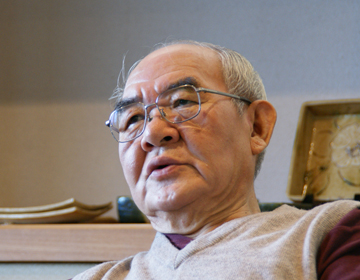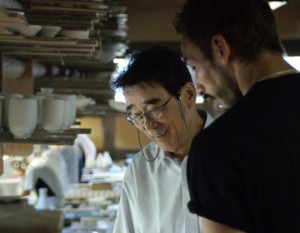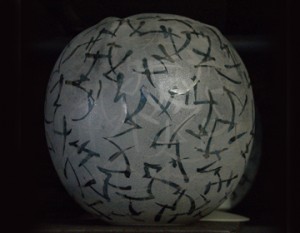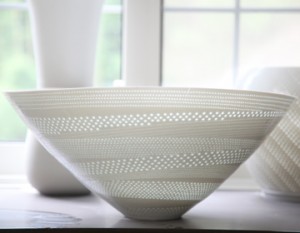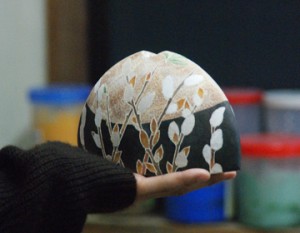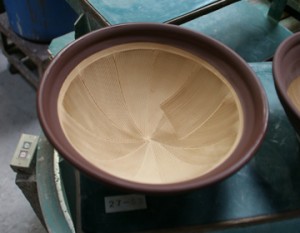Ceramic artist ”Sakusuke Kato”
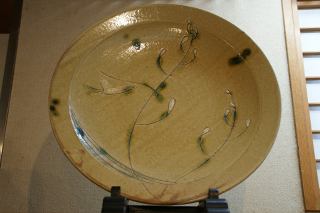
Seto city in Aichi Prefecture, needless to say, is the birthplace of Seto-yaki. In particular, Akatsu has been home to multiple ceramic artists since the days of Shirozaemon Kagemasa Kato, the legendary founder of Seto-yaki. One of them is a family called ”Sakusuke Kato”. The name, Sakusuke, started in the late Edo period, showing that the family has a long lineage exceeding 150 years.
We interviewed Sakusuke Kato the fifth in his workshop. After studying pottery in graduate school at the Tokyo University of Arts, he returned home to the Sakusuke workshop and started his career as a ceramic artist. He received thorough training in the traditional methods in the workshop that has existed since the Edo period. His typical style is the vessels of ”Oribe” with its characteristic green glaze. And he does not rest there. He keeps challenging ways to establish his own style. An example are the pieces with inlays. Nakata was very surprised to see that inlay could be applied to ceramics. Sakusuke Kato is now a very well-known artist, having won many awards, including awards in the Japan Traditional Kogei Exhibition for 42 consecutive years. Apart from his own creative activities, he is very keen on education, taking part in the founding of the Faculty of Ceramics at the Aichi University of the Arts and Music, where he served as professor until his retirement.
Ever changing Seto-yaki

Nakata experienced the process of making patterns on a vessel with ”mosquito nets”, then applied paint on the vessel. By applying the ”mosquito net” pattern, the surface of the ceramics acquire a rustic and soft texture. The ”mosquito nets” used for this process are old ones made of hemp, which are hard to obtain nowadays due to the change of lifestyle and materials used to make mosquito nets. In the workshop, Nakata was also shown a ”coal kiln” which was in use until 20 years ago, and is now very rarely seen. The ”coal kiln” is a simple kiln, which used to be very typical for Seto-yaki. When Keisi Kato, Sakusuke Kato’s son, was a in school, there were many ”coal kilns” chimneys in the town of Seto. The sight of such a kiln reminds us of the history of Seto-yaki.



